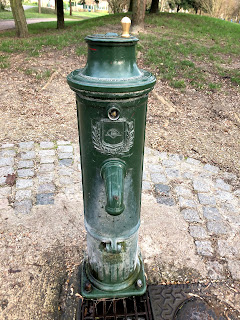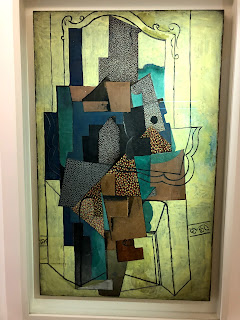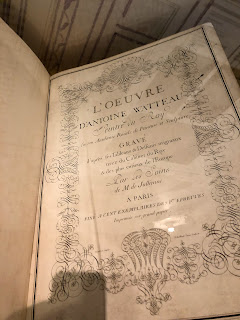In much of the northern United States, last night was the coldest "in more than a generation," according to more than one report I heard.
I can believe it: When I rode to work this morning, the temperature was -1F (-18C). The last time I can recall such a cold commute was in January of 1985, when we had a seemingly endless string of record-cold days. One morning, according to a journal from that time, I pedaled from my uptown apartment to downtown job--a distance of about 10 miles, or 16 kilometers--when the temperature stood at -4F (-20C).
Interestingly, just a month later, New York would record its warmest February temperature--75F (24C) ever. I was visiting my parents, who were living in New Jersey, and rode along the shore--in my shorts!
I have been known to ride in shorts when few other people would. Today wasn't one of those times. I didn't wear, or even carry, a skirt and tights: Instead, I wore a pair of gray dress pants over ski underwear, which I removed when I got to work.
Almost everyone agrees that cycling to work is "healthy", and some insurers will even lower premiums or give bonuses for doing so. Would my insurer see my riding to work on a day when no one else did the same as "healthy", at least in a physical sense? Or would they think I needed more mental health coverage?
All I know is that I felt invigorated--and just really, really good--when I arrived.
I can believe it: When I rode to work this morning, the temperature was -1F (-18C). The last time I can recall such a cold commute was in January of 1985, when we had a seemingly endless string of record-cold days. One morning, according to a journal from that time, I pedaled from my uptown apartment to downtown job--a distance of about 10 miles, or 16 kilometers--when the temperature stood at -4F (-20C).
Interestingly, just a month later, New York would record its warmest February temperature--75F (24C) ever. I was visiting my parents, who were living in New Jersey, and rode along the shore--in my shorts!
I have been known to ride in shorts when few other people would. Today wasn't one of those times. I didn't wear, or even carry, a skirt and tights: Instead, I wore a pair of gray dress pants over ski underwear, which I removed when I got to work.
Almost everyone agrees that cycling to work is "healthy", and some insurers will even lower premiums or give bonuses for doing so. Would my insurer see my riding to work on a day when no one else did the same as "healthy", at least in a physical sense? Or would they think I needed more mental health coverage?
All I know is that I felt invigorated--and just really, really good--when I arrived.










































